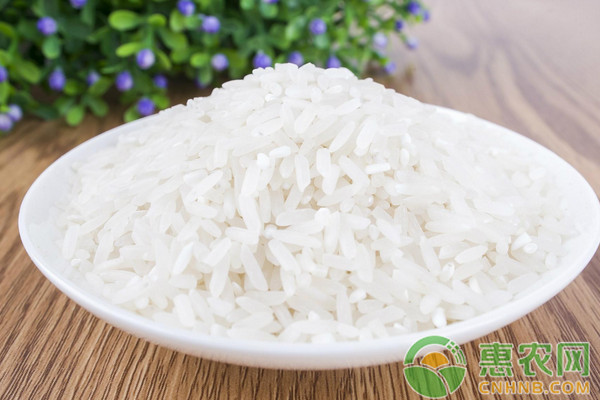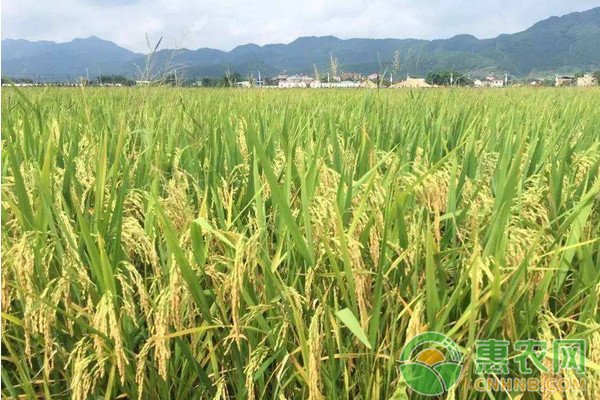Silk seedling-quality rice is a kind of rice variety popular in recent years with the pursuit of higher and higher quality of life. The planting technology of silk seedling type high-quality rice is higher than that of high-yield type high-quality rice. Seedling quality rice needs to take some specific measures.

1 Main features
Compared with other types of rice, silk seedling quality rice has its own characteristics, which are summarized as follows:
1.1 The grain of high-quality silk seedlings is small, the weight of 1000-grain is generally around 17g, and the average quality of rice is 20~23g. Generally, the yield per mu is about 300kg, and the planting is higher than 400kg. However, most of them grow in the state of high plant density and have a great risk of lodging. The high-quality silk seedlings are delicate, easy to prematurely decay, and susceptible to freezing damage; the chaff is thin, and it is easy to sprout on the trees in high temperature and rainy weather.
1.2 High-quality silk seedlings tend to fall more than normal rice. The stems of most silk seedlings are soft, the leaves are long and soft, and they are about 10cm higher than the average rice under the same cultivation conditions. Therefore, they often fall before other rice in the weather. .
1.3 The variety is degraded relatively quickly. If you plant it yourself, plant it for a period of time (such as two or three years), the fragrance will become light, the fragrance will not become fragrant, the taste will become normal, the small grain will become large grain, and the yield will become high. . A planted with a strong aroma and good taste; B planting a light fragrance, poor taste.
1.4 The high quality characteristics of organic planting are obvious, and the fertilizer planting is not obvious. The planting quality of the middle and lower fertile sand fields in the mountainside is good, the use of chemical fertilizers is less, and the organic fertilizer is used more, which has a particularly obvious effect on rice quality. Premature water loss in the late growth stage will decrease, and the quality of the pests will be reduced. The continuous exposure to the sun will reduce the aroma.
2 Main cultivation techniques
The cultivation and management techniques of silk seedlings are similar to those of ordinary high-quality rice. The following are special considerations:
2.1 Choosing mountainside sandy middle and lower fertility field planting
If planted in the fertilizer field, the quality of the silk seedlings produced will be slightly worse and there is a greater risk of lodging.
2.2 Planting in the evening
The quality of silk seedlings planted early is generally slightly worse, and when it is rainy, it is prone to germination and lodging.
2.3 soaking time
Don't be too long, build 36h early, and build 24h in the evening. Because the shell of the silk seedling is thin, it is easy to soak.
2.4 Nursery
Don't build too early, don't build too late. Because silk seedlings are not resistant to low temperatures, they are more susceptible to freezing damage during seedling and later stages. Cultivating age-appropriate sorghum is a very important link in the high-yield cultivation of silk-seeded rice, showing the advantages of early rapid growth, strong resistance to stress and strong disease resistance. When cultivating seedlings, it is necessary to start from the aspects of seed, alfalfa and seedling management. Seeds should be screened and sown after germination. Generally, 30 pieces of cultivating trays are used, and about 150 kg of glutinous rice. The ridges should be leveled and ridged. It is easy to achieve a dwarf sturd, tidy and disease-free. Taking into account the characteristics of the winter climate, to avoid the impact of typhoons and cold dew, resulting in low seed set rate and reduced production, it should be timely planted, early in the early March of each year, late planting in early July.

Under normal circumstances, the silk seedling seedlings are generally transplanted at a height of 16 to 20 cm, the early fertility time is 23 to 30 days, and the late rice is generally about 13 to 18 days. The land should be selected from the leeward lands, and the land preparation should be carried out 1 to 2 days earlier. Before planting, compound fertilizer should be applied. Generally, 150 kg of base fertilizer per hectare is suitable. Before the seeds are sown, the seeds should be incubated 1 to 2 days in advance to enable them to be enzymatically active, which is beneficial to increase the germination rate of the seeds and make the buds uniform; in the soaking process, it is recommended to add an appropriate amount of carbendazim for sterilization. Early breeding must be covered with film insulation to prevent the seedlings from being damaged by freezing. Late breeding should be covered with mesh to prevent heavy rain from rushing out of the topsoil and to play a moisturizing role.
2.5 throwing
The leaves of silk seedlings are long and soft, and they are thrown too densely. In the later stage, they are easily uncontrolled and develop into a high-risk state with high plant density. Too thin is not conducive to increased production. According to the cultivation habits and the situation of the soil, the acre can be mastered at around 18,000 to 20,000.
2.6 Fertilization
It is advisable to use a small amount of multiple fertilizers to avoid concentration of a large amount of fertilization, which leads to the excessive growth of silk seedling rice in the early stage, which is difficult to control in the middle and late stages, resulting in high plant density, easy disease, and high risk status in case of wind and rain. . Nitrogen, phosphorus and potassium should be applied in a balanced manner. Less nitrogen fertilizer, more potassium fertilizer, and organic fertilizer can improve the quality of silk seedlings. The target yield is 375kg per mu, and the field uses medium fertility. Usually, 225kg of rice BB fertilizer (N-P2O5-K2O=20-6-14) and 1500kg of organic fertilizer per hectare are used as the base fertilizer for rice planting in the field; In the next 5 to 7 days, the top dressing will be carried out for the first time. The nitrogen fertilizer will be applied 150kg per hectare (and mixed with herbicide) to promote early greening and early tillering; the second fertilizer will be applied around 15d after transplanting, and the compound fertilizer will be applied per hectare. 250kg is the topdressing of the soil, which can promote tillering, more tillering, and early enough seedlings; after transplanting it, in about 30 days, when the seedlings turn red, apply compound fertilizer, and according to the growth situation, apply about 200kg of rice special fertilizer per hectare. At the same time, we must do a good job in deep root management, in order to improve the resistance of rice seedlings; apply panicle fertilizer at the beginning of the ear, apply 75kg of compound fertilizer per hectare, and maintain a higher seed setting rate. When the leaf color is greenish, do not apply fertilizer at will, so as not to cause production risk.
2.7 Water Management
In the middle and early period, it is necessary to pay attention to the exposure and drying of the field, and improve the resistance to lodging. In the later stage, avoid premature water cutage to prevent high temperature ripening and premature senescence of the seedlings, resulting in reduced yield and deterioration of rice quality. Do not irrigate with contaminated water, which will greatly reduce the aroma and taste of the silk seedlings. In the process of water management, shallow water transplantation and water-returning phenomenon are very obvious, shallow water sputum, water-inch heading and wet grouting, wet maturity.

2.8 Disease, insect, and mouse prevention
Silk seedlings are susceptible to bacterial blight, and special attention should be paid to prevention and control after storms, floods, etc.; in the period of breakage, attention should be paid to the prevention and treatment of sputum and blight, and the occurrence of "black valley" should be reduced; Rice planthoppers and rice planthoppers can also reduce the quality of silk seedlings. In recent years, various types of pests are often encountered in the rice planting process, mainly pests such as rice leaf roller and rice planthopper, which are treated with agricultural means and chemical methods in a targeted manner; The methods and methods can effectively improve the management level of fertilizer and water. The rice grows robustly and is not greedy. The medium-term sun-dried field is yellow, and the group is ventilated and transparent, which can effectively improve the ability to resist pests and diseases. At present, the commonly used drugs and dosages are set to: 20% chlorantraniliprole suspending agent (Kangkuan) 75-150 ml per hectare; 40% concentration of chlorantraniliprom (Fugo) water Dispersible granules, 120 g per hectare; avermectin EC at a concentration of 1.8%, 1500-2250 ml per hectare; when the rice planthopper is controlled, 70% of imidacloprid water-dispersible granules can be added, 75 per hectare ~150g. It is worth mentioning that in the process of planting silk seedlings, attention should be paid to the prevention and control of rodents. In practice, rodent control should be carried out in key periods such as sowing, transplantation, and maturity. Specifically, the mice were trapped with a concentration of 0.5% bromadiolone.
The main difference between silk seedling type high quality rice and general high yield and high quality rice is that its yield is low and the stress resistance is poor but the quality is good. Therefore, it is also important to ensure the quality of silk seedling rice planting process. Use purified and rejuvenated seeds to maintain seed (scent, taste); in the selection process of high-quality silk seedlings, not planting and retaining seeds early, reducing planting algebra; rice paddy rotation: early planting of unscented rice varieties, late Planting fragrant rice varieties. It is best to use water and drought rotation; use organic fertilizer, apply trace element fertilizer, use less fertilizer, reduce nitrogen and potassium, ensure water supply, timely control pests and diseases; timely harvest, avoid drying or exposure to rice, and reduce the loss of fragrance.
The above content not only explains the silk seedling type high quality rice cultivation technology but also introduces its pest control measures, so if you want to learn silk seedling quality rice cultivation technology, come to Hui Nong Internet.
Tetanus Shot,Tetanus Vaccine,Hepatitis B Injection,Hep B Vaccine
FOSHAN PHARMA CO., LTD. , https://www.pharmainjection.com